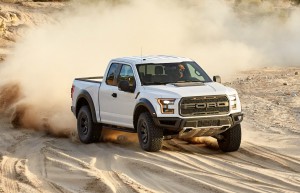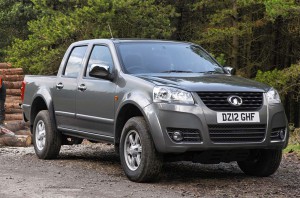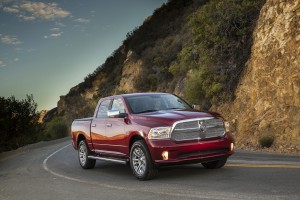They’re banned in Beijing, as well as Shanghai and a number of other cities, but pickup trucks are still expected to be the hot ticket when the Guangzhou Motor Show opens up to the public later this month.
In fact, import trucks like the Ford F-150, as well as little domestic models, are one of the hottest segments of the Chinese auto industry right now, with IHS Automotive expecting a 14% increase in sales for all of 2016, about double the pace of the overall market’s growth.
And despite hefty import incentives, that’s enough to encourage Detroit-based makers to expand pickup export plans, Ford, for one, planning to start shipping its F-150 Raptor model to China starting in 2017.
(Strong pickup demand helps revive U.S. market in November. Click Here for the story.)
The idea of exporting American-made pickups to China might “seem strange, like a creative batch of fake news,” wrote Mike Dunne, a veteran Chinese automotive analyst and columnist for Forbes, but stranger things have been known to happen in what is now the world’s largest motor vehicle market.
Pickups have traditionally been seen as nothing more than work trucks and, in many parts of China, they’re not even allowed on public roads during the daytime, while many major cities ban them entirely.
Meanwhile, in an effort to improve fuel economy and address endemic smog problems, regulators have been tipping the scale towards small, high-mileage cars and electric vehicles.
But a few cities have reversed course of late, in part to help stimulate a cooling domestic economy. Four provinces, Yunnan, Liaoning, Hebei and Henan, have launched trial programs that allow pickups to be driven in urban centers at all times, according to a report by the Reuters news service.
And that’s just the sort of opening American automakers have been hoping for.
Until now, the vast majority of pickups sold in China are what locals call pika-pika, stripped down trucks used to hold goods and equipment on farms and work sites.
But the Detroit makers are now targeting larger, higher-end opportunities with products like the Ford Raptor. General Motors, meanwhile, will begin shipping over U.S.-made Chevrolet Silverados and the smaller Colorado pickup, starting next year.
These aren’t being targeted at the average Chinese worker. American-made trucks are saddled with a 25% import tariff, on top of the 17% value-added tax, or VAT, which means the Raptor starts at $80,000 – compared to $48,325 in the U.S.
(China thumbs nose, raises tariffs on imported luxury cars. Click Here for the latest.)
Ford, meanwhile, is studying other pickup options, possibly including other versions of the F-150, as well as the Ranger, a smaller truck it could ship over from Thailand.
Detroit makers aren’t the only ones who see an opportunity. Toyota now sells its Tundra in China. It remains to be seen if Mercedes-Benz, which recently confirmed it will use a Nissan platform as the base for a luxury pickup, might also target the Chinese market.
Pickups appeal to China’s growing class of wealthy car buyers who are willing to pay for something different, according to analysts. There are also those who need something more flexible than the commercial vans that are commonplace on the country’s roads.
Chinese officials are hoping that the opening of the pickup market will do more than just stimulate imports. In Hebbei Province, a key goal of the experiment is to boost sales and production of the trucks made by local manufacturer Great Wall. Whether they will try to copy the sort of trucks companies like Ford and GM are delivering remains to be seen, but domestic makers have seldom been shy about imitating foreign rivals when they sense an opportunity.
On the other hand, Detroit makers could always add production of their trucks in China were they to sense enough potential demand. And without the import tariffs they’d see a sharp cut in prices – something that has helped them boost demand in other segments.
Despite this year’s double-digit growth, however, pickups remain a small niche in the big Chinese market. Domestic and import manufacturers combined are expected to sell a total 368,791 of the vehicles by the end of this year, forecast IHS. That’s a mere 1.4% of China’s overall light vehicle sales – compared to 15%, or 2.7 million overall, in the U.S.
(Last Chrysler 200 rolls off the line as FCA converts Detroit plant to make more pickups. Click Here for the story.)



